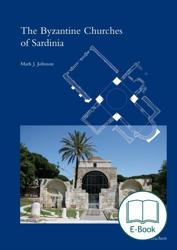This book represents the first detailed study of Byzantine churches on the island of Sardinia. The buildings are described and analyzed in detail both individually and as a group. Many of these churches are cruciform in plan and possess a dome. The book includes an analysis of this plan type as used in Early Christian and Byzantine ecclesiastical architecture from the fourth to the sixth centuries, concluding that the Sardinian churches are datable to the early Byzantine period. Numerous architectural drawings and color photographs illustrate the churches.
This book represents the first detailed study of Byzantine churches on the island of Sardinia and aims to bring them into the mainstream discussion of Byzantine architecture. Although the churches are not unknown and have been studied to some extent primarily by local scholars, this study is the first to be consider the entire corpus of Byzantine ecclesiastical architecture of the island and to consider them in light of similar church architecture elsewhere. The buildings are described and analyzed in detail, both individually and as a group, and considers choice of site, plan, metrology, construction, and materials. These include larger churches constructed near major urban centers such as Cagliari, Tharros, and Sant'Antioco, as well as several smaller churches scattered across the western half of the island.
The first chapter provides an introduction to the Byzantine history of the island and its connections to the rest of the Empire. The second chapter considers two churches generally thought to be Byzantine but concludes that they predate the Byzantine period. The subject of the third chapter is the Church of San Saturnino in Cagliari, the most important of the group and a building that can be linked with the important developments in architecture that took place during the reign of Justinian. The following chapters consider the other cruciform churches on the island as well as a limited number of basilica-planned buildings that belong to this period.
Many of these churches are cruciform in plan and possess a dome. One chapter is an analysis of this plan type as used in Early Christian and Byzantine ecclesiastical architecture from the fourth to the sixth centuries. This overview of church typology demonstrates that most are datable to the early Byzantine period and that most also had a funerary function, given their location in or near cemeteries. Numerous architectural drawings and color photographs illustrate the churches.
The book is intended for scholars and students of Byzantine and Late Antique architecture, as well as for those interested in larger questions of Byzantine history, material culture, and religion.
„This book represents the first detailed study of Byzantine churches on the island of rdinia and aims to bring them into the mainstream discussion of Byzantine architectur. (...) This overview of church typology demonstrates that most are datable to the early Byzantine period and that most also had a funerary function, given their location in or near cemeteries. Numerous architectural drawings and color photographs illustrate the churches. The book is intended for scholars and students of Byzantine and Late Antique architecture, as weil as for those interested in larger questions of Byzantine history, material culture, and religion.“
In:
www.KunstbuchAnzeiger.de, März 2014.
Mark J. Johnson
Born 1954 in Ogden, Utah, USA
Completed PhD in art history at Princeton University in 1986
Taught in the School of Architecture, University of Illinois at Champaign-Urbana, 1986-87; since 1987 has been a member of the art history faculty at Brigham Young University in Provo, Utah, where he is now professor of ancient and medieval art and architecture.
Has published numerous articles on Early Christian and Byzantine art and architecture. His book, “The Roman Imperial Mausoleum in Late Antiquity” was published in 2009.
Diese Schriftenreihe widmet sich speziell den Forschungen zur Christlichen Archäologie und Kunstgeschichte in spätantiker und frühchristlicher Zeit. Sie umfasst die gesamte Epoche der Spätantike bis zum frühen Mittelalter, im Bereich des byzantinischen Reiches auch darüber hinaus.
Die Reihe ist überkonfessionell und ohne Bindung an bestehende Institutionen, arbeitet jedoch mit der „Arbeitsgemeinschaft Christliche Archäologie zur Erforschung spätantiker, frühmittelalterlicher und byzantinischer Kultur“ zusammen. Sie konzentriert sich vor allem auf die Kunstdenkmäler und versteht sich daher nicht als Konkurrenz, sondern als Ergänzung zu schon bestehenden Reihen, die in der Regel nicht nur die materielle Hinterlassenschaft der alten Kirche, sondern stets auch literarische, theologische und philologische Themen behandeln.
Einer klareren Zuordnung und einer größeren Bandbreite der verschiedenen Disziplinen wegen wurden zwei Unterreihen eingerichtet:
Die Reihe A „Grundlagen und Monumente“ setzt sich schwerpunktmäßig mit einzelnen Denkmälern bzw. Denkmalgruppen im Sinne einer korpusartigen Erfassung der Denkmäler auseinander.
In der Reihe B „Studien und Perspektiven“ werden einerseits Vorträge der Tagungen der „Arbeitsgemeinschaft Christliche Archäologie“ publiziert, andererseits bietet sie ein Forum für Untersuchungen zu den verschiedensten Fragen aus dem Gebiet der spätantiken/byzantinischen Archäologie und Kunstgeschichte.


 Leseprobe
Leseprobe